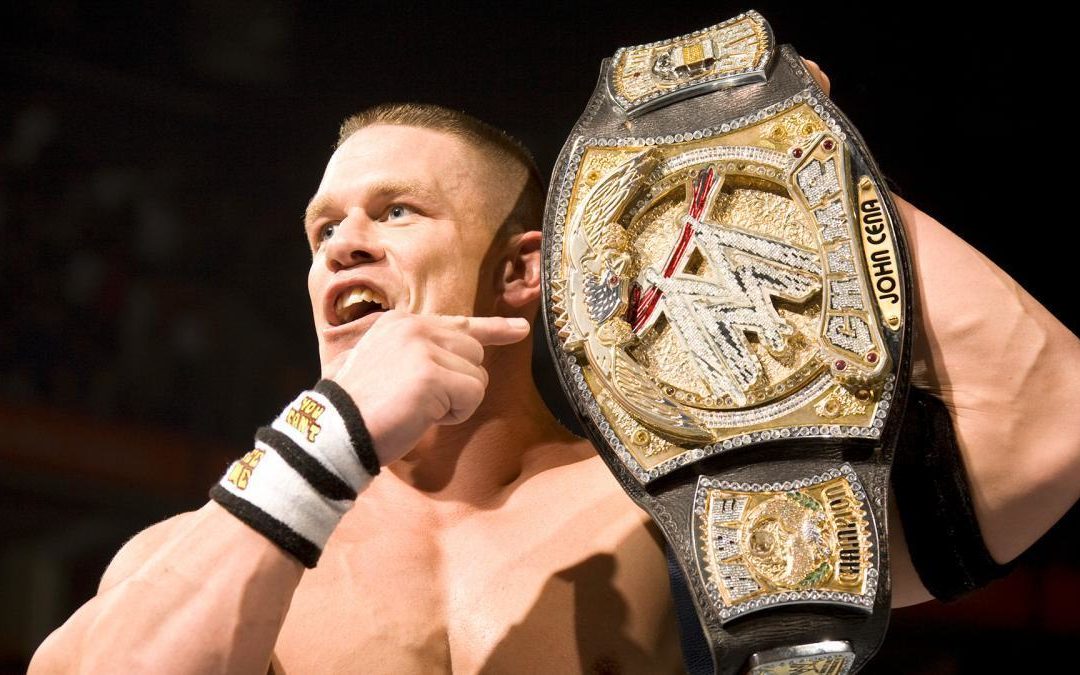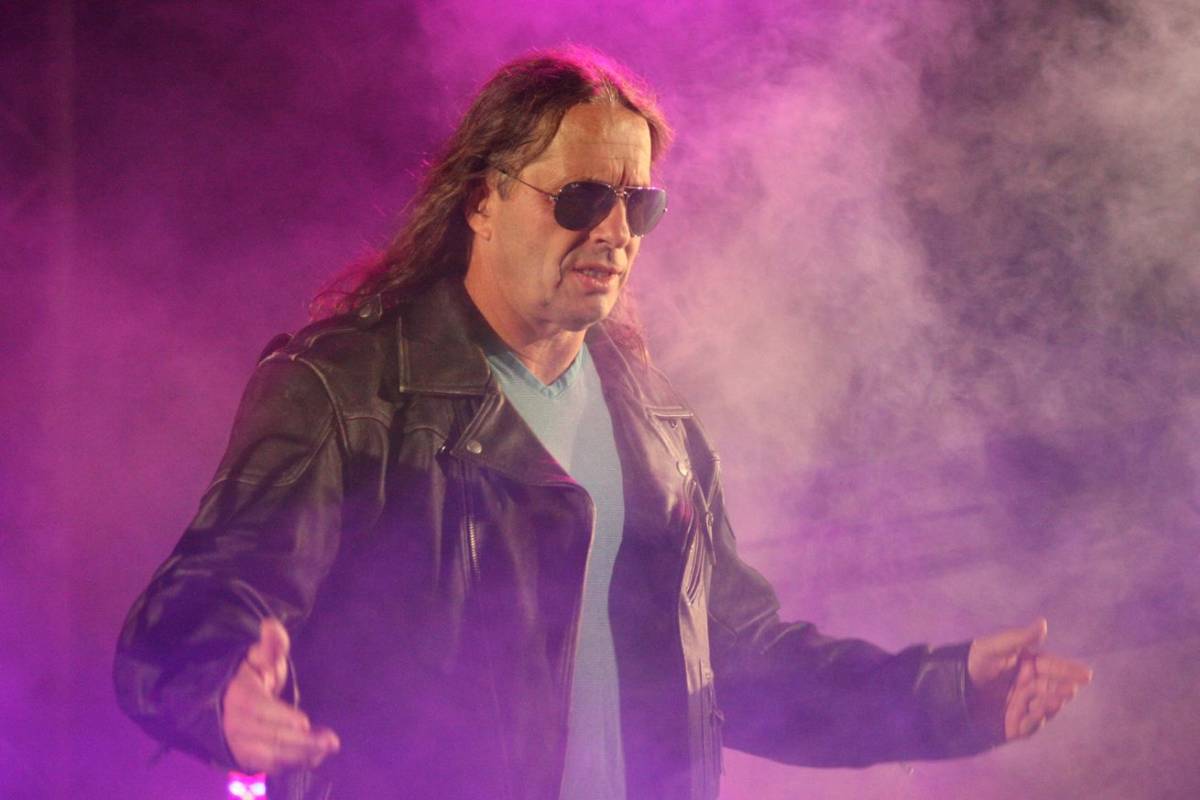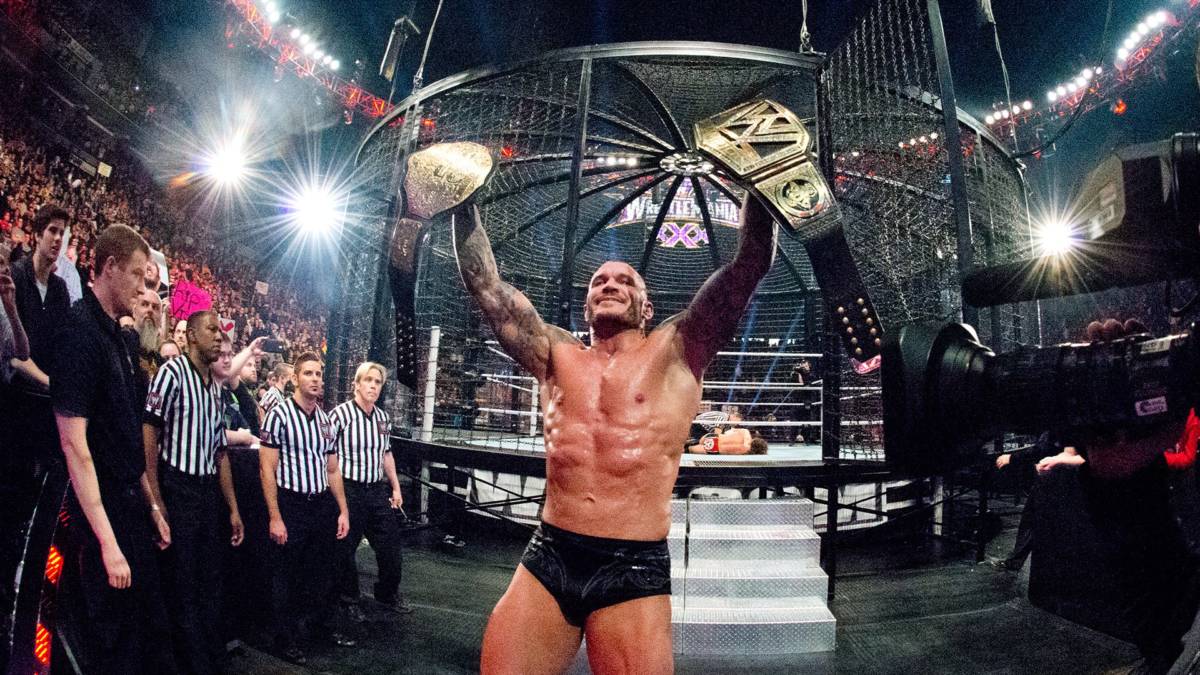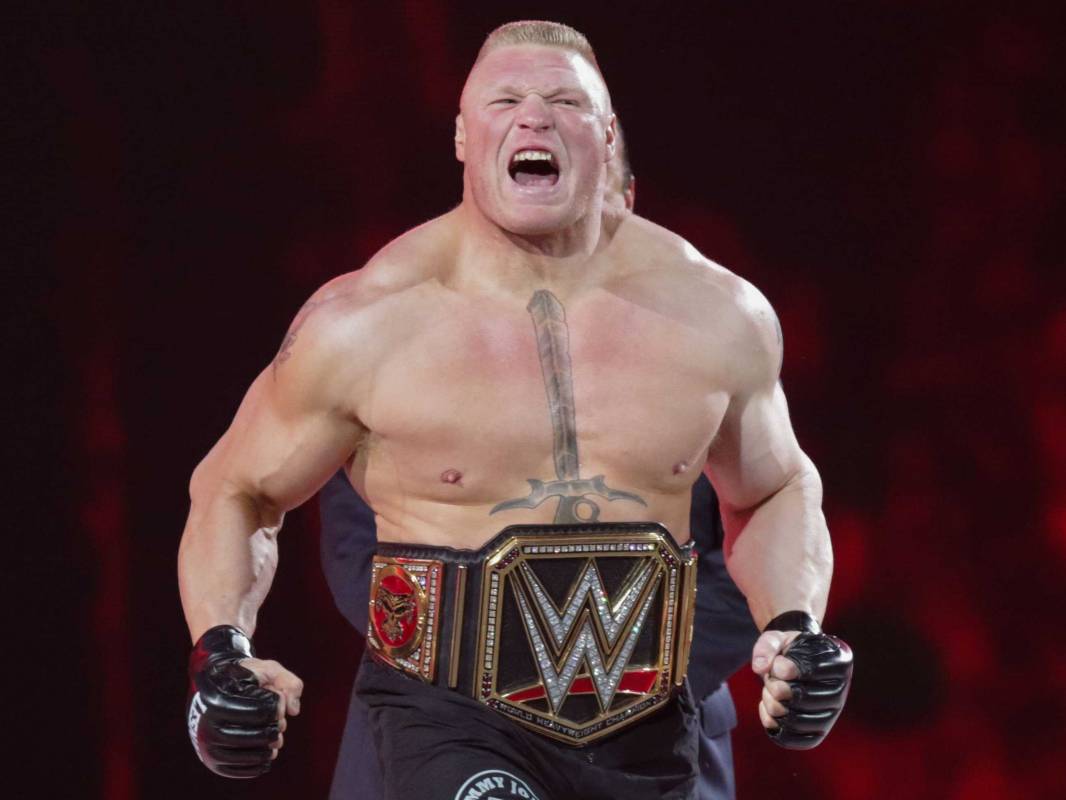Here at Cultured Vultures, we’ve decided to settle a debate once and for all: who is the best WWE Champion of all time? There are lots of names you’d expect to see on this list, but we’re narrowing it down to ten WWE Superstars. We didn’t want anything pesky to get in the way of such a list so we’ve done away with the likes of ‘emotions’ and ‘opinion’ and are basing this list on cold hard facts.
The top ten will be decided based upon how many days a person has held a belt. This gets across a few points, such as how valuable they were to the company during their reigns, how over they were with the fans, and the longevity of their popularity. We’re not taking into account how many reigns each man had, but will include this in the list as an extra bit of info. We are also taking the ‘real’ figures from each wrestler and not the WWE’s ‘doctored’ figures.
Just in case you aren’t aware, or as ancient as me, the WWWF, WWF and WWE are all the same promotion. Figures are correct as of 03/03/2020.
Honourable Mentions
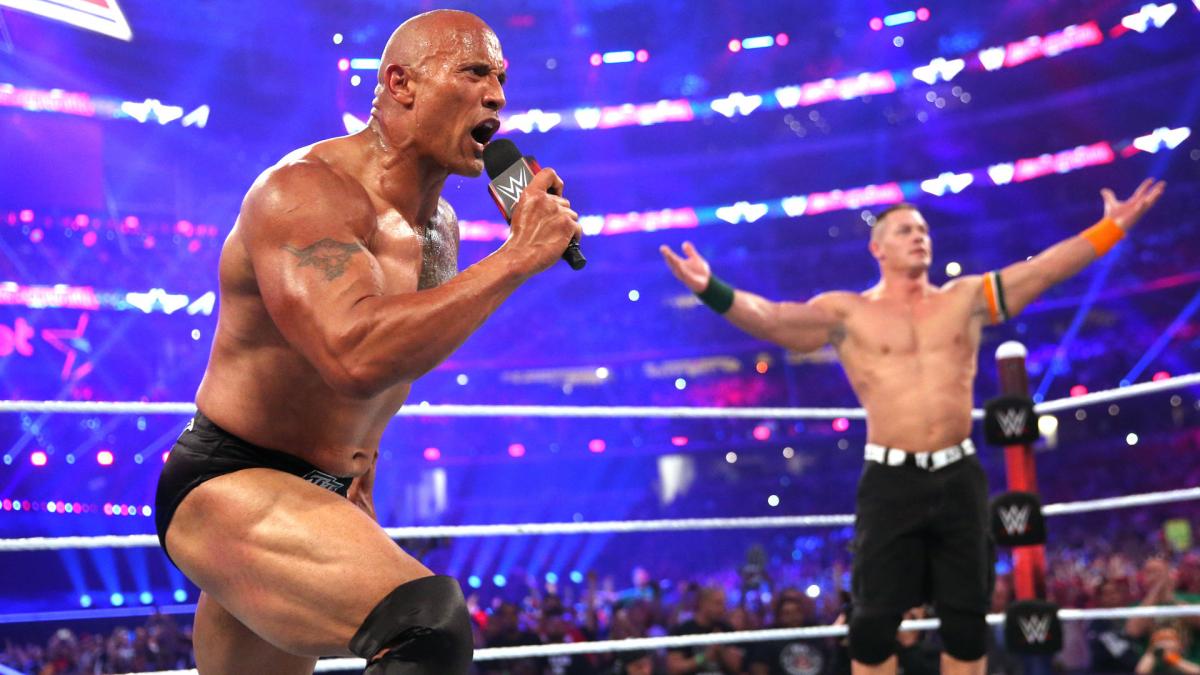
WWE.com
You’ll be surprised who didn’t make the cut, as there are a few big names in the honourable mentions list. For instance, The Rock didn’t even break the top 10, despite being one of the biggest box office stars in history. In reality, he only managed to hold the belt for a measly 367 days over 8 runs with the title.
Surprisingly, AJ Styles and CM Punk are quite high on the list compared to other modern champions, with each man having 2 runs with the title to date, holding the belt for 511 and 462 days respectively. ‘Macho Man’ Randy Savage only had 2 reigns during his tenure in the company, but still managed to hold the belt for a respectable 520 days, missing out on a top ten place by only 10 days.
I’d also like to give praise to those who only very briefly held the WWE Title. Many people know of Shawn Stasiak, but few seem to remember former WWE Champion Stan Stasiak. A talented worker during the 60s and 70s, Stan was chosen to be a transitional champion, the WWE (then WWWF) wanted to move the belt from Pedro Morales to Bruno Sammartino, but didn’t want Sammartino to beat Morales, so Stan held the belt for 9 whole days before losing it.
Rey Mysterio won his single WWE Championship in a tournament, only to lose it to John Cena the same night. Also on the less than a day list is Andre The Giant, who pinned Hulk Hogan following a fast count by a fake referee posing as Dave Hebner. Andre sold the belt to Ted DiBiase shortly after. Ted DiBiase was generally promoted as champion for around a week following his purchase of the belt, but he was stripped of the title and his reign annulled from official WWE history.
Another annulled champion is Antonio Inoki. He beat Bob Backlund in 1979, then a rematch one week later went to a no-contest via interference, then Inoki refused the belt, and it was declared vacant. Instead of explaining this absolute mess, they simply ignored it and in the official records Backlund never lost his belt. For some reason, Kane’s only run with the title lasted a single day, defeating Steve Austin on pay-per-view, only to lose it back to Austin the next night at Raw is War. Last, but sadly not least, Vince McMahon was champion for 4 days, because he’s “Vince McMahon, damn it!”
10. ’Stone Cold’ Steve Austin – 529 Days (6 Reigns)
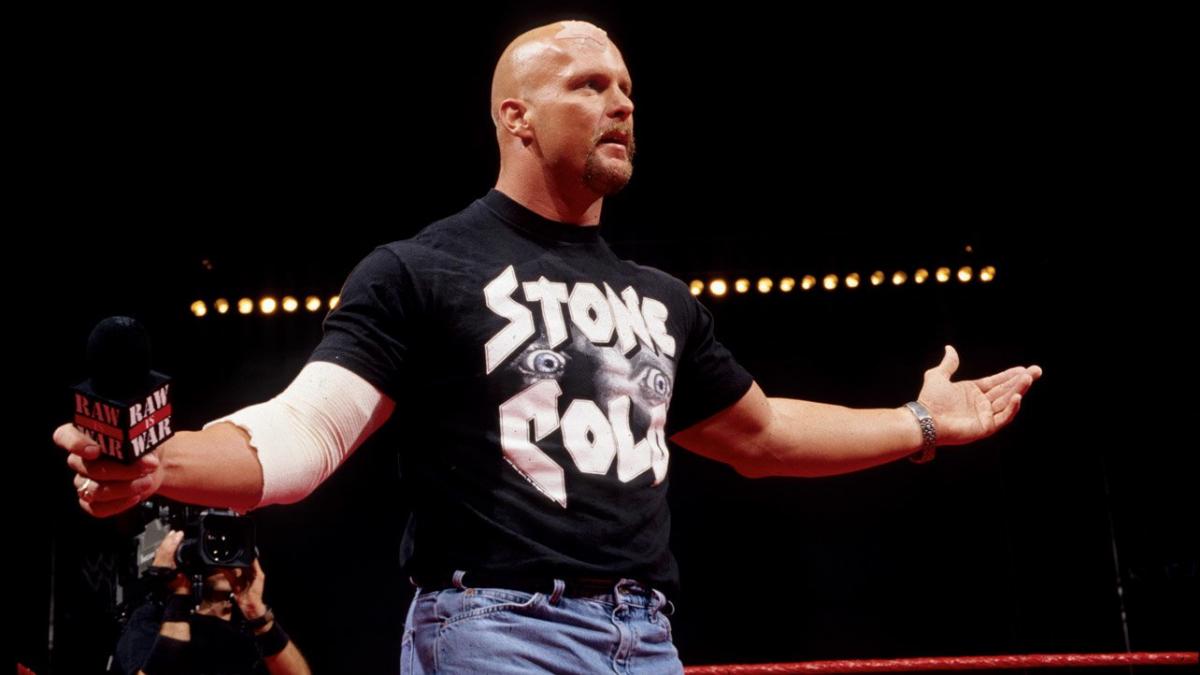
The Texas Rattlesnake only just enters into the top ten ahead of Randy Savage. Austin began wrestling in 1989, and only two years later signed for WCW. Austin worked with Paul Heyman (as Paul E Dangerously) in the Dangerous Alliance, and later formed The Hollywood Blondes with Brian Pillman. Austin injured himself wrestling in Japan, and was fired while on the shelf.
Austin teamed up with Heyman in ECW, and appeared in a number of filmed promos as he was not yet cleared to wrestle. It was in these promos that the first glimpses of his ‘Stone Cold’ persona would begin to appear. Austin later wrestled both Mikey Whipwreck and The Sandman for the ECW World Heavyweight Championship, but was unsuccessful.
Steve Austin signed for the WWF in 1995, defeating Matt Hardy in his debut match. Working as ‘The Ringmaster’ Steve Austin, he sided with Ted DiBiase’s Million Dollar Corporation, however, DiBiase left the WWF later that year, and Austin went solo. Apparently inspired by a cold cup of tea, he changed his nickname to ‘Stone Cold’ and went on to win the King of the Ring 1996. Following his win, he cut the now infamous Austin 3:16 promo which set him well on his way to becoming the biggest star in wrestling.
Austin spent the next couple of years feuding with major WWF stars including Bret Hart, The Rock and Shawn Michaels, and it was Michaels that he defeated for his first WWF Championship win at WrestleMania in 1998. Many of Austin’s runs took place during his career-making feud with Vince McMahon, and during the tail end of Austin’s career, the title was largely won by the likes of Triple H, The Rock, Mick Foley and The Undertaker.
Austin worked for WWE right up until 2004, and following this only made sporadic appearances for the company.
9. Triple H – 609 Days (9 Reigns)
The former Hunter Hearst Helmsley was training to be a wrestler in 1992, and later debuted under the name Terra Ryzing. Much like Steve Austin, Triple H signed for WCW in 1994, using his Terra Ryzing moniker, but his name was later changed to Jean-Paul Lévesque, a play upon Triple H’s real name, Paul Lévesque. He was now a French aristocrat and spoke with a French accent, and while it did sound silly, it set HHH up for his WWE run.
Triple H joined the then WWF in 1995, and continued to work the gimmick of an aristocrat in WWF, debuting as Hunter Hearst Helmsley. Triple H was known as part of the infamous backstage group in WWF, known as the Kliq, alongside Shawn Michaels, Sean Waltman, Scott Hall and Kevin Nash. When the latter two left for WCW in 1996, the duo of Michaels and Triple H hugged in the ring following their match, which became known as the ‘Curtain Call Incident’.
While the fact that wrestling was fake was long out of the bag, wrestlers or promoters still didn’t go out of their way to breach ‘kayfabe’ and kept up the illusion of pro-wrestling. In my opinion, the Curtain Call Incident helped to change the way kayfabe was handled forever. Michaels was not punished for the incident, as he was the current WWF World Champion, Triple H, however, was. His winning of the King of the Ring 1996 never happened and HHH found himself off pay per views for a while.
His punishment didn’t last and Triple H went on to claim King of the Ring ‘97, and form D’Generation-X with Shawn Michaels. DX was a prime example of what the new WWF Attitude Era was all about: rude, crude and seemingly out of control, and in reality, it wasn’t far from the truth. Michaels was a powerful figure backstage and often got his own way, but in 1998, Michaels suffered what was thought to be a career ending back injury, and Triple H became the leader of DX.
The new DX wouldn’t last too long, as Triple H turned on newest member X-Pac at WrestleMania 15 in 1999. This was the start of Triple H’s main event run. Triple H was WWF Champion by August of that year, his reign lasting less than a month, but he regained the title quickly, winning it back in September. The title would change hands often during this era, with Triple H being a 4 time champion by the end of 2000.
Triple H drew the ire of many ‘smart’ fans of this era, who saw him using his marriage to Stephanie McMahon, daughter of WWF owner Vince McMahon, as a way to maneuver himself into any position he wanted.
Rumours that Triple H, much like those who came before, was using his status to remain at the top of WWF grew. His feud with Booker T, fueled by racist undertones, seemed to be setting up for a babyface win for Booker at ‘Mania. It didn’t happen. Just prior to the WWF becoming the WWE, Triple H lost his title to Hulk Hogan in 2002, and did not regain it until 2007, and this run only lasted a couple of hours. His next proper run with the belt would come in 2008, and another in 2009. His last run as WWE Champion was in 2016.
8. Bret Hart – 654 Days (5 Reigns)
Bret ‘The Hitman’ Hart actually made his debut in his father’s promotion, Stampede Wrestling, way back in 1978. He joined the then WWF in 1984, and in 1985 began teaming with his brother-in-law Jim Neidhart as The Hart Foundation. Bret’s agile, technical style would lead Gorilla Monsoon to nickname him ‘The Excellence of Execution’, a name that would stick for his entire career.
Through various feuds, tag teams and matches, Bret worked his way up the ranks and defeated Mr Perfect for the Intercontinental Title in 1991. That same year, Hart also won the King of the Ring. Hart’s first run with the WWF Championship was in late 1992, where he defeated Ric Flair on a house show. His run lasted right up to WrestleMania IX in 1993. Sadly, this was to be one of the worst WrestleManias of all time, and the main event was no exception.
Hart dropped the title to Yokozuna, and while the match wasn’t awful, working a match with a guy the size of Yokozuna couldn’t have been easy. The real kicker came after Hart had lost, when Mr Fuji, manager of Yokozuna, challenged the returning Hulk Hogan to a match there and then. Hogan, naturally, beat Yokozuna with ease to win the WWF Championship.
There was an issue. Hogan chose to leave the WWF later in 1993, and ended up dropping the belt back to Yokozuna only a couple of months later. The WWF had sacrificed Hart to put Hogan back in the main event spotlight, and that may have been an error. Yokozuna and Bret Hart would clash again at WrestleMania X, and this time, the show was a lot better. More importantly, Bret Hart was made to look like a true champion.
Hart held the belt for much of ‘94, until he dropped the title to Bob Backlund at Survivor Series in November of that year. One year later, once again at Survivor Series, Bret defeated Diesel for the championship, before losing it at WrestleMania XII to Shawn Michaels in the famous 60 Minute Iron Man Match. A few title changes later and Shawn vacated the WWF Championship due to a knee injury and had to retire, although it is thought that Michaels simply didn’t want to lose the belt to Hart at WrestleMania 13.
Hart and Michaels’ backstage feud is well documented by now and, by the end of 1997, things had come to an ugly head. Hart won a fatal four way for the vacant title, only to lose it a day later to Sycho Sid. Hart later regained the championship from The Undertaker at Summerslam.
Bret Hart lost the title in controversial fashion to Shawn Michaels, in an unscripted incident known as the Montreal Screwjob. WWF owner had wanted Hart, who was leaving the WWF the very next day, to lose the belt to the now miraculously healed Shawn Michaels. Hart however, wasn’t keen to lose to Shawn.
McMahon worried that Hart winning would essentially mean the WWF Champion working for WCW, and I’m sure he worried that Bret would trash the belt on television, much like Alundra Blayze had done earlier in the decade. It is also possible that Bret simply wanted his win over Michaels that he felt he was owed. The truth has never come out.
Hart jumped to the opposition and went on to become a 2 time WCW World Heavyweight Champion. However, during his world title match against Goldberg, Hart was kicked in the head, giving him a concussion which would later lead to his retirement. Bret Hart and Vince McMahon made amends, and Hart went on to make a number of appearances for the WWF in the 2010s.
7. Randy Orton – 658 Days (9 Reigns)
Randy Orton comes from a proud wrestling family, and, from the off, it seemed that the WWE had big plans for him. His father, ‘Cowboy’ Bob Orton, while never a major champion in any promotion, found himself at the heart of the history of the WWE, having been a part of the main event of the first WrestleMania (narrowly avoiding what looked like a legitimate punch thrown by Muhammed Ali).
Most people aren’t aware that Randy’s brother Barry also worked for the WWE, wrestling as Barry O. From the very start, Randy Orton had ‘the look’ that Vince McMahon adores: he is tall, muscular and toned. It also helps that Orton is tremendously athletic, making him the perfect McMahon wrestler. Mix that in with great mic work and you can see why he’s been part of the WWE main event scene for close to 20 years.
Orton came through the Ohio Valley Wrestling system, one of the WWE’s more successful development territories. OVW prepped some of the biggest Ruthless Aggression era wrestlers for the ring: John Cena, Brock Lesnar, Shelton Benjamin and, of course, Randy Orton all graduated from OVW in the early 00s.
During his early run with the WWE, Orton joined Evolution, a stable also comprised of Triple H, Ric Flair and Mark Jindrak. Jindrak was swapped out for another OVW graduate, Dave Bautista before the group debuted on television. Orton quickly became known as the Legend Killer, and his feuds with the likes of Shawn Michaels and Mick Foley helped to solidify his main event status.
Orton’s first run with the WWE title only lasted minutes, as he was awarded with the title at No Mercy 2007, and accepted, then lost a match with Triple H moments later. Orton regained the title later that same night, beating Helmsley in a Last Man Standing match, meaning his first two reigns with the belt happened on the same night.
His next win came at Backlash 2009, where the WWE used that annoying tag team stipulation, that if anyone pinned Triple H in this 6 man tag, they’d win the WWE Championship from him. Naturally, Orton pinned ‘The Game’ for his third run. He’d only hold the belt until June, losing it to former stable-mate, Batista. Batista suffered a bicep tear, and only a week later, Orton was champion again, beating Triple H, Big Show and John Cena in a four way match.
During the remainder of ‘09, he traded the belt back and forth with Cena. Orton had three runs with the title between 2010 and 2013, before having his final title run (to date) in 2017. Orton has been one of the most regular competitors over the past two decades, and it seems more and more that the WWE are using him in less intensive roles of late, which is understandable.
6. Brock Lesnar – 730 Days (5 Reigns)
I loved Brock Lesnar during his original run in the company. The man was a beast, a hulking behemoth with a solid mat wrestling game, so there is no wonder that he ventured off to the world of UFC for many years. Much like Orton, Lesnar signed a development detail in the early 2000s and was sent to OVW. He quickly formed a tag team with his former college roommate Shelton Benjamin and became known as The Minnesota Stretching Crew. The pair were very successful, becoming 3 time OVW Tag Team Champions.
Lesnar debuted on WWE TV as a monster heel, managed by Paul Heyman. Heyman made a great mouthpiece for Lesnar, who was generally silent during this era, even though he’s not bad on the mic. After some minor feuds, Lesnar went on to win the King of the Ring 2002 and then his first WWE Championship at Summerslam. His rise was meteoric, but Lesnar was superhot.
Lesnar held the belt until November, dropping it to Big Show, of all people. He won the title back in his infamous match against Kurt Angle at WrestleMania. While it’s a great match, it’s often remembered for Lesnar’s horrific looking Shooting Star Press botch, a move that he used to perform regularly in OVW. Lesnar would trade the belt with Angle through 2003.
Lesnar left the WWE after a disappointing WrestleMania match with Goldberg in 2004, with rumours he would be joining the NFL. Due to a groin injury from an automobile accident, Lesnar only played a few preseason games for the Minnesota Vikings, before being released. In 2005, he joined New Japan Pro Wrestling and became the IWGP Heavyweight Champion.
In 2008, Lesnar joined the UFC. Despite an early loss to Frank Mir, Lesnar had won the UFC Heavyweight Championship by the end of the year. He held the title until his 2010 loss against Cain Velasquez. Lesnar was suffering with diverticulitis, he underwent surgery but later left the UFC.
He returned to the WWE in 2012, and won his fourth WWE title in 2014, looking unstoppable until he lost the title to Seth Rollins at WrestleMania the following year. He would return to UFC in 2016 and defeat Mark Hunt. This return would be short lived, after Lesnar tested positive for a banned substance. He was suspended and fined, and wouldn’t work for the UFC again.
Lesnar would then need to wait five years for his next run with the belt, beating Kofi Kingston in October 2019. As of writing, Brock Lesnar has a long wait to go to surpass our next entry.
5. Pedro Morales – 1,027 Days (1 Reign)
Pedro Morales was already a big name by the time he joined the WWWF (now WWE). A former WWA World Heavyweight Champion prior to joining, he would only be in the company months before becoming the fourth man ever to hold the WWE Championship. Bruno Sammartino had been a huge draw for the WWWF during the 1960s, and had been champion for several years.
Vincent J. McMahon wanted to put the belt on the also popular Pedro Morales, but without damaging either man’s babyface reputation. So, McMahon had Sammartino drop the title to heel Ivan Koloff in January 1971, and only twenty one days later, Koloff dropped the belt to Morales.
Morales would go on to hold the title for the next couple of years. During this time period, Morales would compete against some of the biggest stars in wrestling. ‘The Big Cat’ Ernie Ladd, George ‘The Animal’ Steele, Mr. Fuji, Blue Demon and Big John Studd all faced off against Morales at some point, but he could not be toppled. Morales did eventually fight Bruno Sammartino, in a rare face vs face match. The pair wrestled to a 75 minute draw, much to the displeasure of the New York fans.
Pedro Morales would also tag with many of the greats as well, the aforementioned Sammartino, Andre The Giant, Chief Jay Strongbow and Gorilla Monsoon to name but a few. Morales would eventually drop the belt to Stan Stasiak in 1973, who would himself lose the belt a few days later to Bruno Sammartino. Morales would leave the WWWF in 1975.
In the years following, Pedro Morales would go on to work for NWA San Francisco, the American Wrestling Association and New Japan Pro Wrestling, amongst other promotions. It wouldn’t be long before the WWWF came knocking again, and he’d rejoin the group in 1980. While he’d never win the WWE Championship again, he’d win the Tag Team and Intercontinental titles, making him the first Triple Crown Champion in WWE history.
He’d go on to retire in 1987, but would continue to work for the WWE as a road agent and on the Spanish commentary team. He would also later work as a commentator for WCW.
4. John Cena – 1254 Days (13 Reigns)

Despite being a 13 time champion, John Cena’s career hasn’t exactly been straightforward. While he is the perfect fit for Vince McMahon’s WWE posterboy image, his wrestling style and gimmick were never fully accepted by the growing influx of ‘purist’ wrestling fans to the WWE in the 2000s.
Cena began wrestling for UPW as ‘The Prototype’, a semi robotic wrestler gimmick in 1999. He’d leave UPW for WWE development in 2001, and worked for development territory up until 2002. He’d immediately enter into some big feuds, narrowly losing to Kurt Angle early on, and also feuded with Chris Jericho and Los Guerreros (Eddie and Chavo).
Cena would team with Billy Kidman in the WWE Smackdown Tag Team Championship tournament, losing in the opening round. Cena would turn on Kidman, becoming heel. A short time later he’d morph in ‘The Doctor of Thuganomics’, wearing ‘street gear’ and rapping before matches. While the gimmick may sound ridiculous (and it was), Cena later admitted that the gimmick saved his career, as he’d been struggling getting over beforehand.
During this period, Cena’s career would spring to life, and he’d defeat The Undertaker, Chris Benoit and Eddie Guerrero, but Cena would eventually turn face, and he’d never go back to the dark side again. At WrestleMania 21, Cena won his first WWE Championship, beating John Bradshaw Layfield in the process. His second would come relatively quickly, beating Edge at Royal Rumble 2006.
Cena dropped the title to Rob Van Dam at ECW One Night Stand 2006. His most prolific run was from 2009-2011. Cena was a regular in the main event and title race, holding the belt six more times during this period alone. During this era, he’d trade the belt with the likes of Sheamus, CM Punk and Randy Orton, before defeating The Rock at WrestleMania 29 for his eleventh title win.
Cena would win the title twice more, in 2014 and most recently, in 2017, defeating AJ Styles for the title. Since 2018, Cena has only made sporadic appearances for the company, and looks to have retired for good at WrestleMania 36. But, does anyone truly stay retired from WWE?
3. Bob Backlund – 2,083 Days (4 Reigns)
Bob Backlund was technically the first WWF Champion, as the promotion changed its name from the World Wide Wrestling Federation, to World Wrestling Federation in 1979. Backlund made his debut in the early 70s, debuting for the American Wrestling Association and later working for various National Wrestling Alliance territories before signing with the WWWF in 1976.
Backlund would go on to win the WWWF Heavyweight Championship from ‘Superstar’ Billy Graham in 1978, and would defend the belt against the likes of Ivan Koloff, Mr Fuji and George Steele, amongst others. He also took part in a rare WWWF vs NWA title match against Harley Race, which predictably ended in a draw.
Bob was a bit of a bland babyface, popular sure, but no particular character to speak of. That was until 1979, when his tag team partner Peter Miavia turned on him, and he became a raving maniac, screaming that he would “kill that son of a bitch!”. Shocking language today, imagine the impact of it appearing on TV in the 70s.
In a title switch that isn’t actually recognised by WWE, Backlund lost the belt to Japanese star Antonio Inoki in Tokushima, Japan. Inoki would only hold the belt for a week, before dropping it back to Backlund. However, WWF president Hisashi Shinma overturned the decision due to interference from Tiger Jeet Singh. Inoki refused the belt, so Bob Backlund defeated Bobby Duncum in a Texas Death Match in his return to the United States.
Backlund would team with Pedro Morales in 1980 to win the WWF Tag Team Titles, but, due to an old rule that one wrestler could not hold two belts, had to vacate them. Backlund would feud with Hulk Hogan, and while he did defeat him on a number of occasions, it was never by pinfall or submission.
In a bizarre twist, the championship would ‘change hands’ when a dazed referee gave the WWF Championship to Greg Valentine. While officially this reign isn’t recognised, Valentine was promoted as WWF Champion in some publications, most likely to drum up interest in a Valentine/Backlund rematch. It worked, a Steel Cage Match was held and Bob Backlund came out victorious.
By 1983, fans had grown tired of Bob Backlund, and he won Wrestling Observer Newsletter’s Most Overrated Wrestler that same year. Vince McMahon Jr was now in control of the WWF, and wanted to put the belt on the charismatic Hulk Hogan. Bob refused a heel turn, so Vince chose The Iron Sheik as a transitional champion to the Hulkster. Backlund’s manager Arnold Skaaland threw in the towel on his behalf as Backlund had (kayfabe) injured his arm.
Bob Backlund left the WWF in 1984, and worked for the short lived Pro Wrestling USA, a joint promotion by the NWA and the AWA. But by 1985 he had dropped out of the pro wrestling scene altogether, entering a retirement of sorts. Backlund would return to wrestling in the early 90s, working for a number of independent promotions, before making an unexpected return to the WWF in 1992.
Backlund’s return would set the stage for the way the wrestler would be remembered by modern audiences, a strange and weird throwback to days of wrestling past. Backlund would ‘snap’ during matches, locking his opponents into his Crossface Chicken Wing submission finish, and afterwards appear horrified at what he’d done.
Backlund’s gimmick of a volatile, out of touch eccentric was unique for the New Generation era, and got him over as a heel, one who was out to teach these whippersnappers a lesson. This would lead Bob to align himself with Owen Hart, and eventually defeat Bret Hart to lift his fourth and final WWF Championship.
His reign was short-lived at only three days. He was beaten by Diesel (Kevin Nash) in only eight seconds. A Bret vs Bob ‘I Quit’ match took place at WrestleMania XI, Backlund lost, and would find himself wrestling less and less on WWF television. He would go on to manage The Sultan for a spell in the mid-90s, but otherwise he was limited to making only occasional appearances on WWF television, although he did manage Kurt Angle for a while.
Backlund would go on to work (and wrestle) for New Japan in 2001, and NWA-TNA in 2007. He would return to the now-WWE once again, and made a number of appearances, the most notable being the ‘life coach’ of Darren Young, prior to his release. In 2018, at 68 years of age, Bob Backlund returned to Japan, and worked two matches for independent promotion Dradition Pro Wrestling.
2. Hulk Hogan – 2185 Days (6 Reigns)
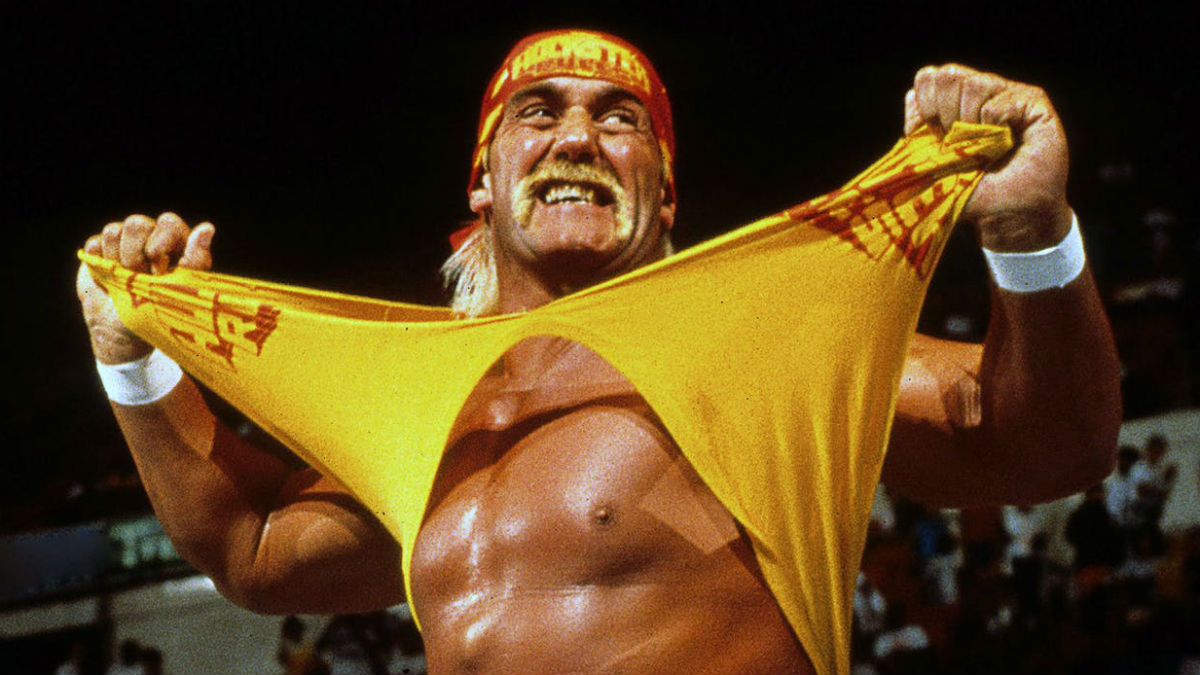
We all knew he’d be top of this list, and while modern Hogan is generally treated with disregard by many fans, he’s probably been the wrestler that has made the biggest impact on pro wrestling as we know it. In 1976, Hulk Hogan was scouted as a pro wrestler due to his impressive physique, and spent a year training under acclaimed pro wrestling coach Hiro Matsuda at Championship Wrestling from Florida.
Hogan left CWF, and would actually begin managing a gym. Hogan’s friend Ed Leslie came onboard to help out, and the pair spent a lot of time training together and eventually formed a tag team called the Boulder Brothers. While wrestling in Tennessee, Hogan appeared on a talk show alongside The Incredible Hulk star Lou Ferrigno. The host commented that Hogan was actually bigger than Ferrigno, which then led to Hogan working as Terry ‘The Hulk’ Boulder.
His first run with the then-WWF was in 1979, Vince McMahon Sr was impressed with his presence and look, and wanted him to have an Irish name, christening him ‘Hogan’. During this short run, he’d work with some of the biggest names in the promotion, including Bob Backlund, Ted DiBiase and Andre the Giant.
Hogan would then go on to work for New Japan in 1980, winning the original IWGP Heavyweight Championship. In 1981, Hogan began working for the American Wrestling Association, just after appearing in Rocky III. Hogan debuted as a heel, but fans easily fell in love with him, and this led to a face turn, his first major face run.
Hogan rejoined the WWF in 1983 as a babyface, and would defeat The Iron Sheik for his first WWF Championship in 1984. This pushed ‘Hulkamania’ into the public’s collective consciousness. Even today the act of ripping your shirt off your body in a similar vein is often linked back to the character.
Hulk Hogan helped the WWF establish a national foothold over rival promotions and the Rock n’ Wrestling Connection helped to make Hogan, the WWF and various others into household names. Hogan would hold the title until 1988, where he’d lose the title in controversial fashion to Andre the Giant, who’d later give the belt to Ted DiBiase. While DiBiase wasn’t an official WWF Champion, he would defend his title prior to being stripped of it.
Randy Savage won a tournament to crown a new champion at WrestleMania IV, and Hogan would then defeat him one year later at WrestleMania V. Hogan lost his belt to up and coming babyface The Ultimate Warrior in 1990, only to once again win it back by defeating Sgt. Slaughter in 1991 at WrestleMania VII. Later that year, Hogan was defeated by another up and coming wrestler, The Undertaker. ‘Taker would only hold the belt for a week, again losing it back to Hogan. The belt was then vacated, and Hogan wouldn’t be in the title scene for a couple of years.
During this time, WWF owner Vince McMahon would be accused of distributing steroids to his wrestlers. Coincidentally, Vince began pushing smaller workers (or in some cases, fatter) into the main event picture, which saw the likes of Bret Hart, Ric Flair and Yokozuna pushed into the spotlight. After Yokozuna defeated Bret Hart to lift the belt at WrestleMania IX, Hogan came to the aid of his friend.
Hogan was then challenged to an impromptu match, and defeated Yokozuna for his fifth title reign. He’d drop the belt back to Yokozuna in the summer of that year, before leaving the WWF. Hogan worked a couple of matches in New Japan Pro Wrestling before signing for World Championship Wrestling in 1994. During this run he developed his heel Hollywood Hulk Hogan persona, started the nWo faction and remained with WCW until 2000.
Hogan underwent knee surgery and worked one match for the Xtreme Wrestling Federation (against Curt Hennig) before resigning for the WWF in 2002 and winning the WWF Championship for the sixth time in April of that year. The company was renamed World Wrestling Entertainment, making Hogan the last ever WWF Champion.
Hogan left the WWE in 2003, and would make an appearance for TNA later that year, although a planned match would not occur due to injury, that year he’d also work for NJPW again. Hogan did return to the WWE in 2005, and feuded with Shawn Michaels and Randy Orton during his two year tenure.
Hogan was due to face Jerry Lawler at Memphis Wrestling, although it later turned out that Lawler wasn’t contractually allowed to, due to his hosting of Raw on the USA Network, so the WWE replaced Lawler with the Big Show, whom Hogan defeated. Hogan would later go on to work for TNA once again, in an attempt to bring the promotion into contention with the WWE. It failed miserably.
Hogan returned to WWE in 2014, but would be gone a year later after a recording of Hogan using a racial slur came to light. He again returned to WWE in 2018, and in 2019 it was announced that the nWo would be inducted into the WWE Hall of Fame.
1. Bruno Sammartino – 4040 Days (2 Reigns)
Bruno Sammartino arrived in the USA from post-war Italy in 1950, and quickly turned to weightlifting. Bruno became known for performing strongman stunts in the Pittsburgh area. In 1959, he set the world record for bench press, and came to the attention of a local promoter. He made a huge splash in wrestling, winning his first bout in only 19 seconds. Two weeks later, in January 1960, Sammartino made his debut at Madison Square Garden, winning in only 5 minutes.
Sammartino then went to work for Vince McMahon Sr’s Capitol Wrestling Corporation, and also planned to wrestle in California too. However, while travelling to California, McMahon Sr claimed that Sammartino missed two bookings, which Sammartino claimed to have not been made aware of. Sammartino found himself banned in multiple territories, including California and the CWC territory, effectively making him unemployed. In his autobiography, Sammartino claimed that Vince McMahon Sr had done this on purpose, to punish him for also working elsewhere.
Bruno returned to Pittsburgh and found work as a labourer — he wouldn’t wrestle again until 1962. Wrestler Yukon Eric recommended that Sammartino contact Canadian promoter, Jack Tunney, and Sammartino found himself working in Toronto, where he became a local star. He even challenged legendary NWA World Heavyweight Champion Lou Thesz on two occasions. He didn’t win the belt, but his strong booking made people pay attention to him.
Meanwhile, the CWC was rebranded the World Wide Wrestling Federation in 1963, and had just crowned Buddy Rogers as the first WWWF Champion. Rogers was a great draw, but a mild heart attack and various chest pains saw McMahon Sr make the decision to swap the title onto someone else. Bruno Sammartino had the look and presence to carry the belt, and Vince knew it. But there was still the problem of Sammartino’s suspension.
Vince McMahon Sr paid Sammartino’s outstanding fine, which allowed him to work freely in the USA once more and in May 1963, Bruno Sammartino defeated Buddy Rogers to win the WWWF Championship. The match only lasted 48 seconds due to concerns over Rogers’ heart condition, and Rogers would only wrestle tag team or short singles matches from this point on.
Sammartino and Rogers would collide again, this time in a tag team match later in the year, where Rogers would get the pin over Sammartino. There isn’t huge amounts of information on feuds that Sammartino had during that era; wrestling was still seen as legitimate, and while there were feuds, they didn’t play out the same as they do today.
We know that Sammartino did face off against Gorilla Monsoon, as he was number one contender for a while, and even lost to him via disqualification. Sammartino would also briefly hold the WWWF International Tag Team Titles with Tony Marino, defeating The Rising Suns. All good things must come to an end, and after seven years, that would be it for Sammartino’s world title run.
Bruno Sammartino lost his title to Ivan Koloff in 1971, in front of a stunned crowd in New York. While he may have seen it as his first and last run with the title, it wasn’t to be. The belt was quickly shifted onto Pedro Morales, another charismatic babyface, but Sammartino would be called upon again.
In 1973, Bruno Sammartino won the WWWF Championship for a second time, defeating Stan Stasiak. Initially reluctant to take on the belt again, he was promised a reduced schedule and a percentage of gate takings to do it. Sadly, during this run he suffered a neck fracture in a match against Stan Hansen, and despite holding the belt for three years, he later felt that he couldn’t go on as champion due to mounting injuries.
He lost the title to Superstar Billy Graham, and challenged for his belt several times, all to no avail. Following his loss, Sammartino toured the USA, and fought many well known opponents including NWA World Heavyweight Champion, Harley Race, before retiring in 1981. But he was not yet done with the now-WWF.
Bruno Sammartino discovered that the now deceased Vince McMahon Sr had not paid him his fully promised percentages of the gates during his second run. Sammartino took the WWF to court, which was settled out of court, and saw a deal struck where he’d return as a commentator. Sammartino was still a big name, and Vince McMahon Jr knew this, so he wanted to entice Bruno back to the ring.
The WWF signed Bruno’s son David, and a feud saw David and Bruno taking on Brutus Beefcake and his manager Johnny Valiant. Bruno would also later feud with Randy Savage, and even defeated the WWF Intercontinental Champion via DQ. Bruno would begin to dislike the direction of the promotion, and his last match with the company saw him team with Hulk Hogan to defeat One Man Gang and King Kong Bundy in 1988.
Following his departure, Bruno Sammartino made sparing appearances on wrestling shows, including as a commentator for the Universal Wrestling Federation, as well as an appearance at NWA Halloween Havoc. Bruno declined his now-WWE induction to the Hall of Fame for years until he was finally convinced to do so in 2013.
Some of the coverage you find on Cultured Vultures contains affiliate links, which provide us with small commissions based on purchases made from visiting our site.
